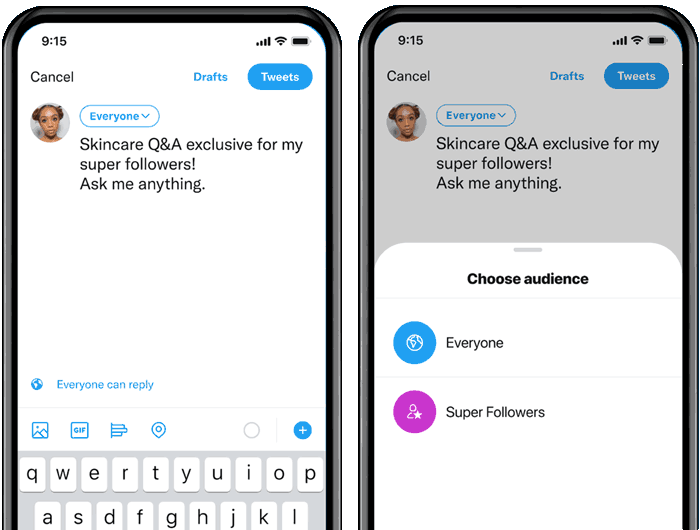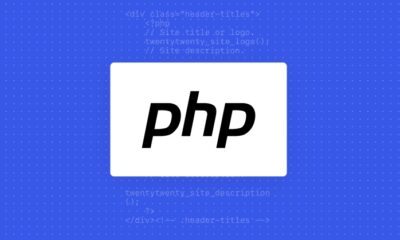NEWS
Twitter Super Follows: New Way to Monetize Followers via @sejournal, @martinibuster
Twitter introduced a new program that allows Twitter creators to monetize their followers with a monthly subscription. The new way for creators to earn revenue on Twitter is called Super Follows.
The program is currently in testing mode and is temporarily open only to United States creators.
Twitter users in the United States and Canada can subscribe and become super followers but this will change over the coming weeks as it rolls out worldwide.
Eligibility to participate as a creator is currently limited to United States creators.
The program is currently limited to users on the Apple iOS Twitter app but that will change at some point in the future. Once that changes users and creators on Android and on the Twitter.com site itself will be able to interact together as well.
Advertisement
Continue Reading Below
What is Twitter Super Follows?
Super Follows enables approved Twitter creators to charge a subscription to followers who will be able to view exclusive bonus content.
The content shared with Super Follows subscribers is private and only viewable by the subscribers.
Twitter users who purchase a subscription, known as Super Followers, will receive a public badge that is highlighted under their name whenever they interact with the creator who they are paying a subscription to.
That gives the creator an opportunity to pay more attention to subscribers if they wish.
What Can Be Shared in Private with Super Followers?
Right now the Super Follows allows creators to share private tweets that include polls, links, conversation threads and voice tweets.
Advertisement
Continue Reading Below
Twitter states they will roll out other features in the future:
“Currently, people who offer a Super Follows subscription can share Tweets to their Super Followers. As we roll out further, we hope to include Spaces, newsletters and other Twitter features as potential bonus content.”
Screenshot of a Twitter Super Follow Post


How Much Will Creators Earn from Twitter?
Subscription rates on the system are: $2.99, $4.99 and $9.99 a month.
Creators receive 97% of revenue after in-app purchases fees are deducted up to $50,000 of lifetime earning. After $50,000 they are eligible to earn up to 80% after the in-app purchases fees.
Apple currently charges 30% of in-app purchases.
Twitter published a payment fees breakdown of a fictional Super Follower who hasn’t yet met their $50k threshold.
This is the “demonstration purposes” only example:
“$4.99 – Super Follows subscription cost
$1.50 – Apple’s in-app purchase fee (currently, 30% of subscription cost under Apple’s terms, subject to change by Apple)
$0.10 – Twitter’s minimum share
$3.39 – Creator is eligible to take home up to this amount”
Advertisement
Continue Reading Below
Screenshot of Twitter Creators Subscription Set-up Page


Who is Eligible for Super Follows Program?
The Super Follows program is currently limited at this time to United States creators.
Advertisement
Continue Reading Below
Users must meet guidelines in order to participate.
Here is a partial list of guidelines:
- Must be 18 years old
- Must have 10,000 active followers
- Have posted 25 tweets in the previous month
- Active for at least 3 months
- Have a complete Twitter profile, with a header image
- Must have a verified email address
- Account must be secured (two-factor authentication)
The program is prohibited to individuals who’ve violated Twitter’s user agreements or ad policies, have to be a person and not a state affiliated account and other various guidelines related to applicable local laws, and prohibitions on illegal activities or content that violates Twitter’s content guidelines.
Advertisement
Continue Reading Below
How to Apply to the Super Follower Program?
Right now the Super Follower program is in testing mode and are limiting the amount of users who are approved.
One can sign up right now. Those not selected at this time will be put on a wait list.
Signing up is easy. Simply open the Twitter app and navigate to the Main Menu > Monetization > Super Follows.
Citations
Read the official announcement
Introducing $uper Follows
Read the Super Follows FAQ
About Super Follows Creators
Read an overview of Super Follows
Be the first to try Ticketed Spaces and Super Follows
Read a Super Follows overview
Super Follows
Advertisement
Continue Reading Below
Read the Super Follow policies
Super Follows Policy


















